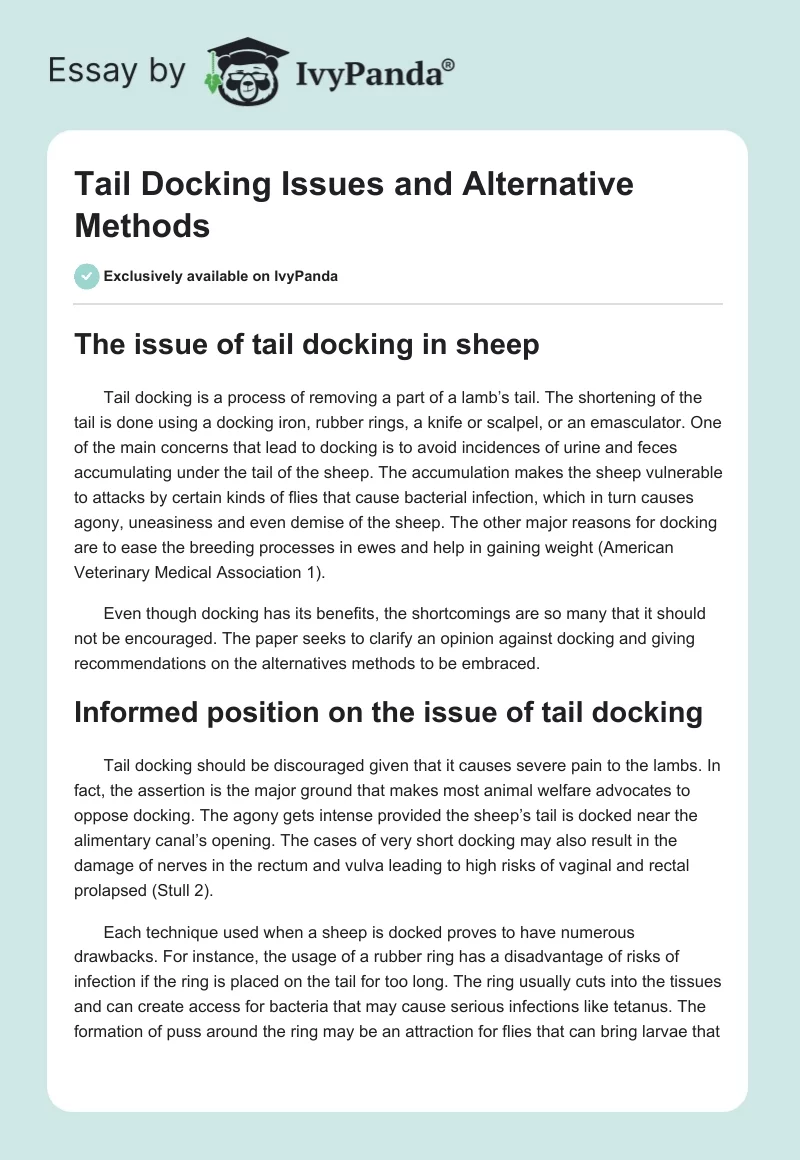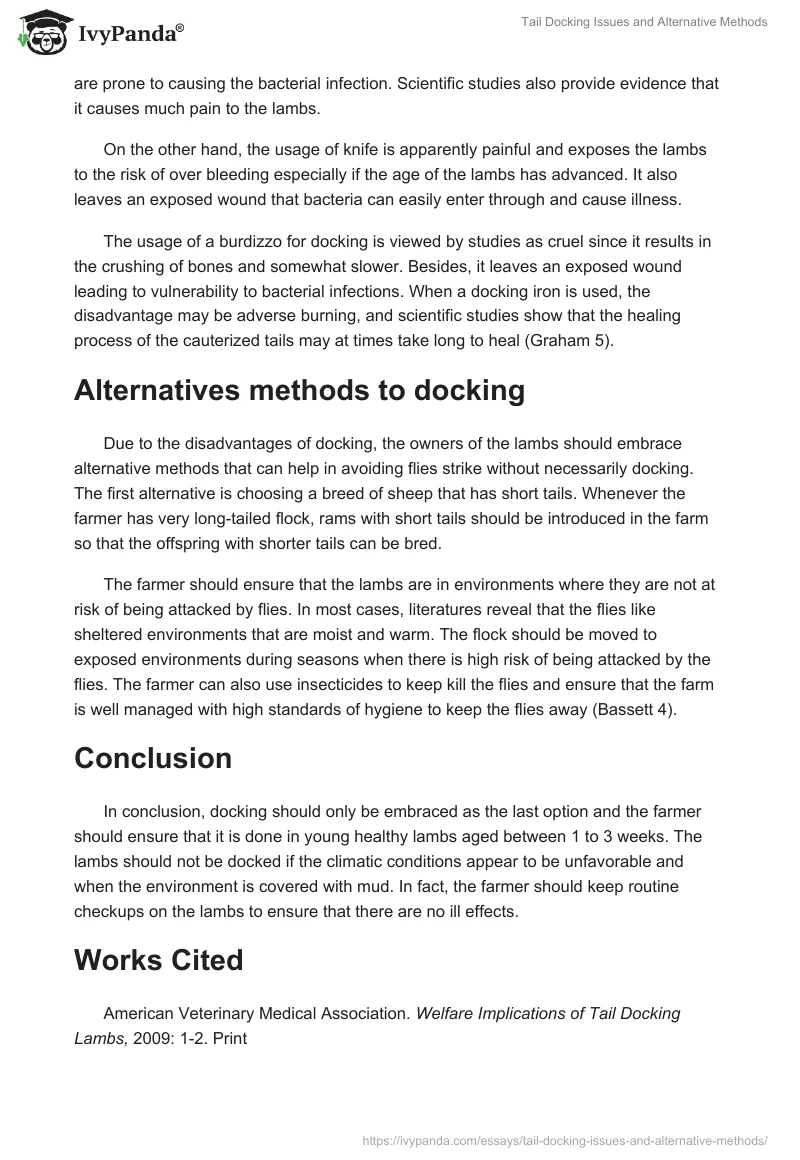The issue of tail docking in sheep
Tail docking is a process of removing a part of a lamb’s tail. The shortening of the tail is done using a docking iron, rubber rings, a knife or scalpel, or an emasculator. One of the main concerns that lead to docking is to avoid incidences of urine and feces accumulating under the tail of the sheep. The accumulation makes the sheep vulnerable to attacks by certain kinds of flies that cause bacterial infection, which in turn causes agony, uneasiness and even demise of the sheep. The other major reasons for docking are to ease the breeding processes in ewes and help in gaining weight (American Veterinary Medical Association 1).
Even though docking has its benefits, the shortcomings are so many that it should not be encouraged. The paper seeks to clarify an opinion against docking and giving recommendations on the alternatives methods to be embraced.
Informed position on the issue of tail docking
Tail docking should be discouraged given that it causes severe pain to the lambs. In fact, the assertion is the major ground that makes most animal welfare advocates to oppose docking. The agony gets intense provided the sheep’s tail is docked near the alimentary canal’s opening. The cases of very short docking may also result in the damage of nerves in the rectum and vulva leading to high risks of vaginal and rectal prolapsed (Stull 2).
Each technique used when a sheep is docked proves to have numerous drawbacks. For instance, the usage of a rubber ring has a disadvantage of risks of infection if the ring is placed on the tail for too long. The ring usually cuts into the tissues and can create access for bacteria that may cause serious infections like tetanus. The formation of puss around the ring may be an attraction for flies that can bring larvae that are prone to causing the bacterial infection. Scientific studies also provide evidence that it causes much pain to the lambs.
On the other hand, the usage of knife is apparently painful and exposes the lambs to the risk of over bleeding especially if the age of the lambs has advanced. It also leaves an exposed wound that bacteria can easily enter through and cause illness.
The usage of a burdizzo for docking is viewed by studies as cruel since it results in the crushing of bones and somewhat slower. Besides, it leaves an exposed wound leading to vulnerability to bacterial infections. When a docking iron is used, the disadvantage may be adverse burning, and scientific studies show that the healing process of the cauterized tails may at times take long to heal (Graham 5).
Alternatives methods to docking
Due to the disadvantages of docking, the owners of the lambs should embrace alternative methods that can help in avoiding flies strike without necessarily docking. The first alternative is choosing a breed of sheep that has short tails. Whenever the farmer has very long-tailed flock, rams with short tails should be introduced in the farm so that the offspring with shorter tails can be bred.
The farmer should ensure that the lambs are in environments where they are not at risk of being attacked by flies. In most cases, literatures reveal that the flies like sheltered environments that are moist and warm. The flock should be moved to exposed environments during seasons when there is high risk of being attacked by the flies. The farmer can also use insecticides to keep kill the flies and ensure that the farm is well managed with high standards of hygiene to keep the flies away (Bassett 4).
Conclusion
In conclusion, docking should only be embraced as the last option and the farmer should ensure that it is done in young healthy lambs aged between 1 to 3 weeks. The lambs should not be docked if the climatic conditions appear to be unfavorable and when the environment is covered with mud. In fact, the farmer should keep routine checkups on the lambs to ensure that there are no ill effects.
Works Cited
American Veterinary Medical Association. Welfare Implications of Tail Docking Lambs, 2009: 1-2. Print
Bassett, Anna. “Management to Avoid Tail Docking Sheep”. Animal welfare approved technical advice fact sheet, 2.1 (2009): 4-6. Print
Graham, Manus. Castration and Tail Docking of Lambs, Penicuik, United Kingdom: Moredum Foundation, 2001. Print.
Stull, Carolyn. “Welfare Concerns: Tail Docking of Sheep.” White paper. University of California, 2009: 1-3. Print.


